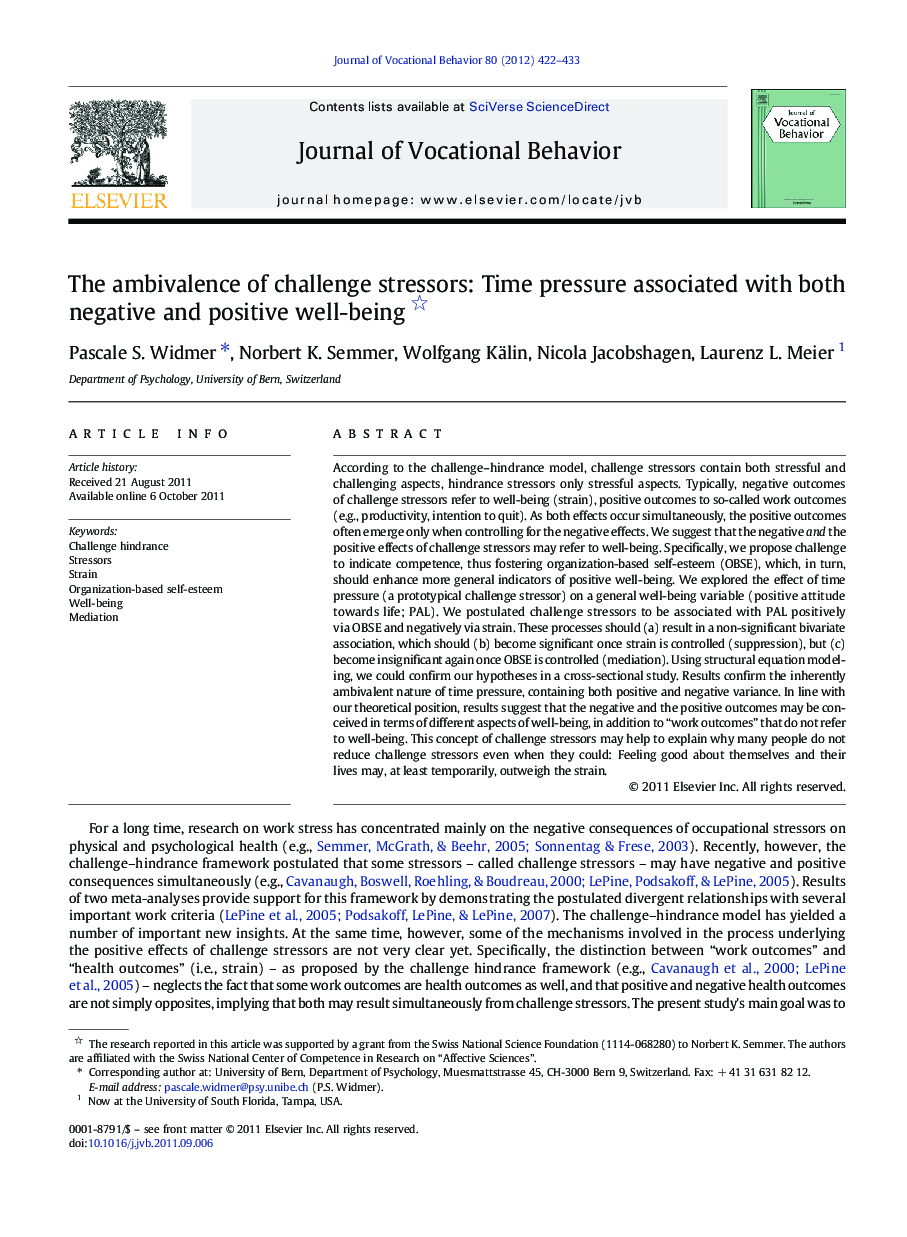| کد مقاله | کد نشریه | سال انتشار | مقاله انگلیسی | نسخه تمام متن |
|---|---|---|---|---|
| 887085 | 913161 | 2012 | 12 صفحه PDF | دانلود رایگان |

According to the challenge–hindrance model, challenge stressors contain both stressful and challenging aspects, hindrance stressors only stressful aspects. Typically, negative outcomes of challenge stressors refer to well-being (strain), positive outcomes to so-called work outcomes (e.g., productivity, intention to quit). As both effects occur simultaneously, the positive outcomes often emerge only when controlling for the negative effects. We suggest that the negative and the positive effects of challenge stressors may refer to well-being. Specifically, we propose challenge to indicate competence, thus fostering organization-based self-esteem (OBSE), which, in turn, should enhance more general indicators of positive well-being. We explored the effect of time pressure (a prototypical challenge stressor) on a general well-being variable (positive attitude towards life; PAL). We postulated challenge stressors to be associated with PAL positively via OBSE and negatively via strain. These processes should (a) result in a non-significant bivariate association, which should (b) become significant once strain is controlled (suppression), but (c) become insignificant again once OBSE is controlled (mediation). Using structural equation modeling, we could confirm our hypotheses in a cross-sectional study. Results confirm the inherently ambivalent nature of time pressure, containing both positive and negative variance. In line with our theoretical position, results suggest that the negative and the positive outcomes may be conceived in terms of different aspects of well-being, in addition to “work outcomes” that do not refer to well-being. This concept of challenge stressors may help to explain why many people do not reduce challenge stressors even when they could: Feeling good about themselves and their lives may, at least temporarily, outweigh the strain.
► We study associations between a challenge stressor–time pressure–and well-being.
► Time pressure is associated with negative and positive well-being simultaneously.
► Positive effect of challenge stressor is mediated by organization-based self-esteem.
► Differentiation between strain and “work outcomes” should be refined.
► Results may explain why people enduringly expose themselves to challenge stressors.
Journal: Journal of Vocational Behavior - Volume 80, Issue 2, April 2012, Pages 422–433